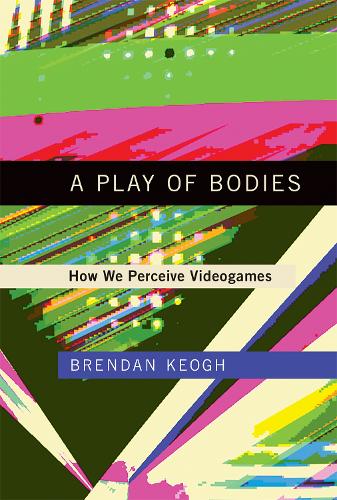
A Play of Bodies: How We Perceive Videogames
(Hardback)
Publishing Details
A Play of Bodies: How We Perceive Videogames
By (Author) Brendan Keogh
MIT Press Ltd
MIT Press
6th April 2018
United States
Classifications
Professional and Scholarly
Non Fiction
Cognition and cognitive psychology
794.8
Physical Properties
Hardback
248
Width 152mm, Height 229mm, Spine 11mm
Description
An investigation of the embodied engagement between the playing body and the videogame- how player and game incorporate each other.Our bodies engage with videogames in complex and fascinating ways. Through an entanglement of eyes-on-screens, ears-at-speakers, and muscles-against-interfaces, we experience games with our senses. But, as Brendan Keogh argues in A Play of Bodies, this corporal engagement goes both ways; as we touch the videogame, it touches back, augmenting the very senses with which we perceive. Keogh investigates this merging of actual and virtual bodies and worlds, asking how our embodied sense of perception constitutes, and becomes constituted by, the phenomenon of videogame play. In short, how do we perceive videogamesKeogh works toward formulating a phenomenology of videogame experience, focusing on what happens in the embodied engagement between the playing body and the videogame, and anchoring his analysis in an eclectic series of games that range from mainstream to niche titles. Considering smartphone videogames, he proposes a notion of co-attentiveness to understand how players can feel present in a virtual world without forgetting that they are touching a screen in the actual world. He discusses the somatic basis of videogame play, whether games involve vigorous physical movement or quietly sitting on a couch with a controller; the sometimes overlooked visual and audible pleasures of videogame experience; and modes of temporality represented by character death, failure, and repetition. Finally, he considers two metaphorical characters- the "hacker," representing the hegemonic, masculine gamers concerned with control and configuration; and the "cyborg," less concerned with control than with embodiment and incorporation.
Author Bio
Brendan Keogh, Research Fellow in the School of Communication at Queensland University of Technology, is the author of Killing Is Harmless: A Critical Reading of Spec Ops: The Line.
